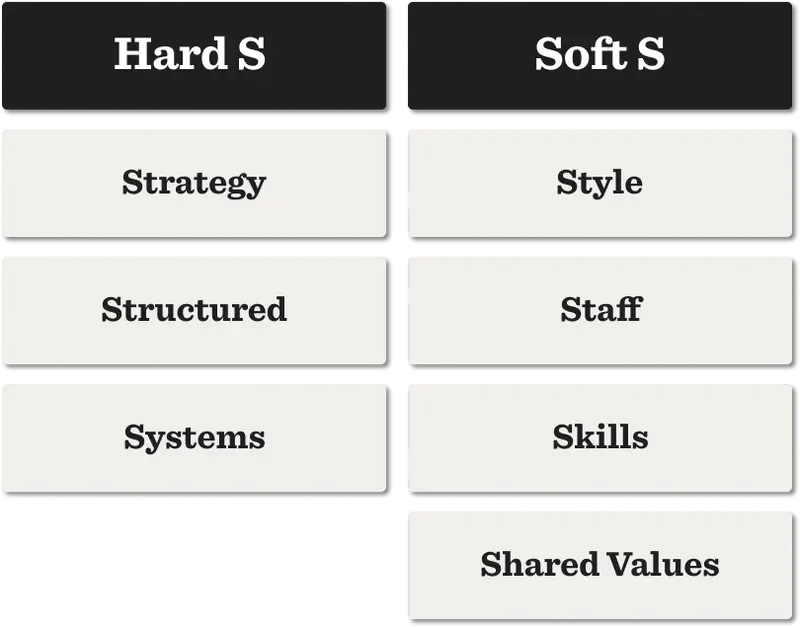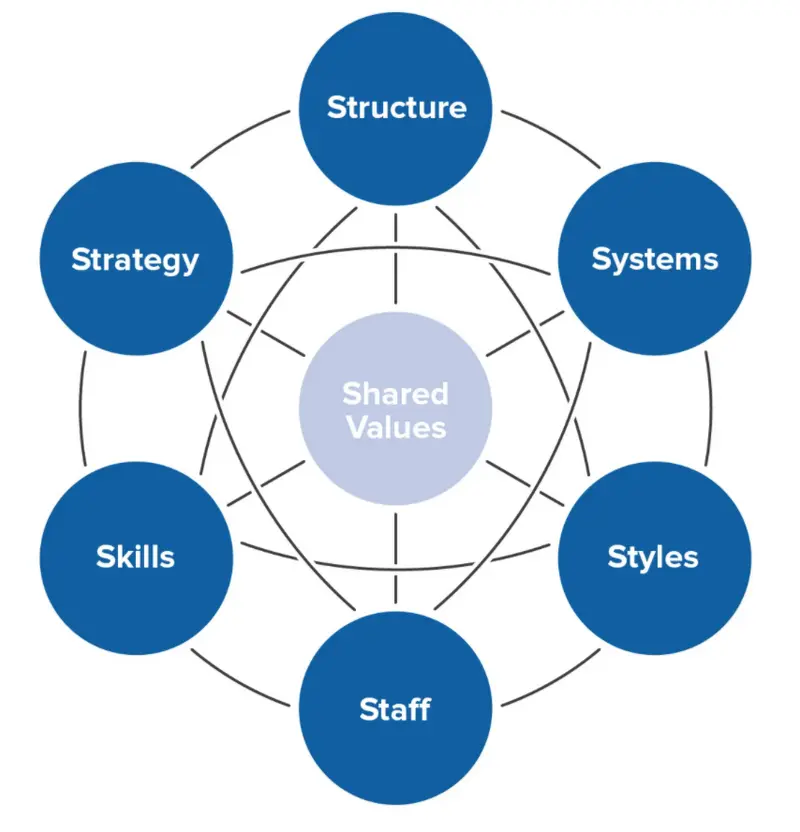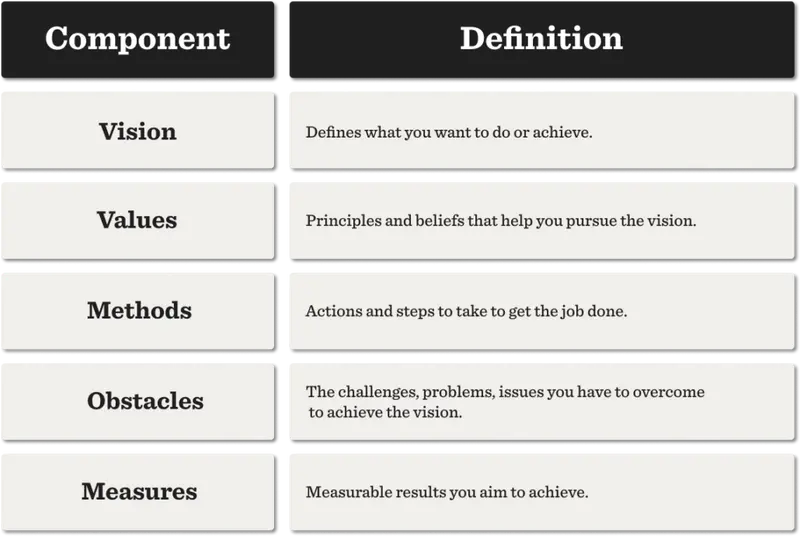
How to Build Organizational Alignment Easily

What is organizational alignment?
Generally speaking, a startup is a fast moving organization. The goal is to grow quickly and attack a market. If a startup has raised venture capital, this is particularly true. A startup is likely hiring and deploying capital at a quick clip. Staying aligned as a team as new faces continue to pop up in the office is a key to success. Mix in the state of remote work and organizational alignment is vital.
Organizational alignment is a strategy where company employees and stakeholders are aligned to grow, achieve goals, and execute on company mission, vision, and values more effectively and quickly.
Related Reading: How To Manage Remote Teams: 16 Tips From a Remote Startup

Importance of organizational alignment
As we alluded to earlier in the post, startups are fast moving organizations generally with a focused goal or vision. Being able to effectively communicate, make decisions, and grow is vital. Below are a few of the important aspects of organizational alignment.
Business strategy
When starting a business there is likely a set business strategy that executives and founding members believe will be the key to success. Organizational alignment will allow everyone involved, plus new hires, to stick to the strategy to efficiently grow.
Decision-making
Making quick decisions is important in the growth stage of a business. In order to best and most efficiently make it is important that everyone is aware of what is happening with the business. By having all stakeholders engaged the decision will come quicker with more conviction.
Business performance
At the end of the day a more aligned organization will lead to better business outcomes as a whole.
Company/corporate culture
One of the biggest benefits of organizational alignment is the ability to lift and solidify a company culture. Gone are the days of employees being attracted by ping pong tables, free lunch, and company happy hours. Top talent is attracted to an organization because of the work and the company culture. They are in search of transparency, ownership, and responsibility in the workplace. Organizational alignment is a great way to help employees feel as they are solving problems and helping the business grow.
Employee Engagement
Piggybacking off of the idea that organizational alignment will help promote a strong company culture it will also help employees engage. When employees are aware of what is going on and their feedback is welcome, they will be more engaged and more invested in the success of the company and their personal growth.
How to build organizational alignment
There are countless methods and approaches to create company alignment (more specific frameworks below) but we have found there are 3 areas to focus on that will help companies build organizational alignment.
Individual Goals and Purpose
Before you can start building alignment across the entire organization, individuals need to have a deep understanding of their own purpose and goals. If an employee is not feeling the ownership and importance of their role aligning them with the rest of the organization won’t give them the benefits organizational alignment can offer.
One aspect of this is understanding the role and position they are filling but also on the leadership team to understand their desires to make sure they are filling the right position. As Jeff Boss put it in an article for Forbes, “Ask your people what motivates them, why they’re doing what they’re doing, where they see themselves in three years and what might happen if they don’t get there. Set the conditions for candor now to prevent the loss of talent later.”
Team Goals and Purpose
Once an employee has a clear understanding and their role you can begin to align the individuals in a team or business unit. Because everyone knows their position everyone should be able to come together and align themselves as a team. No one should be questioning who owns what or how they can contribute.
Different teams likely have their own set of metrics and KPIs that they are responsible for. Every individual in a team should know how they can contribute to the growth or achievement of their team’s KPIs.

Cross Team Alignment
Now that individual teams are aligned and aware of their goals they can start aligning across an organization. Business units and teams can’t be siloed and expected to impact the business as best as possible. In order to best perform all teams need to be informed and aligned. Jeff Boss uses an example of sales and marketing teams:
“It doesn’t matter how great your sales teams perform if your marketing teams fail to get the message out, and vice versa… What impedes alignment between teams, they say, are disparate systems, lack of transparency and visibility on goals, and skewed expectations—all of which fall under the umbrella of poor communication.”
Organizational alignment starts with an individual knowing their role and position in the organization. From there a startup can set up a system and framework to best align their individuals and teams.
Organizational alignment model/framework examples
Below are a few of our favorite frameworks that have stood the test of time to help organizations stay aligned:
McKinsey 7-s model
Originally introduced in the 1970s the McKinsey 7-s model has certainly stood the test of time. As defined by the team at Corporate Finance Institute, “The McKinsey 7S Model refers to a tool that analyzes a company’s “organizational design.” The goal of the model is to depict how effectiveness can be achieved in an organization through the interactions of seven key elements – Structure, Strategy, Skill, System, Shared Values, Style, and Staff.”
The 7s are split into 2 groups — hard and soft:

As defined by the team at Strategic Management Insight, “Strategy, structure and systems are hard elements that are much easier to identify and manage when compared to soft elements. On the other hand, soft areas, although harder to manage, are the foundation of the organization and are more likely to create the sustained competitive advantage.” We put quick definitions of each “s” below but you can learn more here.
- Strategy — The business plan and strategy behind the organization’s product, go-to-market, and growth.
- Structured — How the organization is structured and organized.
- Systems — The chain of command, communication, and decision making framework across the organization.
- Style — How individuals interact and work with each other. Can resemble company culture.
- Staff — The human resource and talent related to hiring, alignment, and recruiting.
- Skills — The specific skills of individuals and teams that allow a company to execute on a strategy.
- Shared Values — The mission, vision, and values of an organization.

Image from the team at Mind Tools.
The team at Mindtools explains how to execute on the 7-s model in 4 steps:
- Start with your shared values: are they consistent with your structure, strategy, and systems? If not, what needs to change?
- Then look at the hard elements. How well does each one support the others? Identify where changes need to be made.
- Next, look at the soft elements. Do they support the desired hard elements? Do they support one another? If not, what needs to change?
- As you adjust and align the elements, you’ll need to use an iterative (and often time-consuming) process of making adjustments, and then re-analyzing how that impacts other elements and their alignment. The end result of better performance will be worth it.
V2MOM – Salesforce model
One of our favorite alignment strategies at Visible is the V2MOM Model from Salesforce. As Marc Benioff, CEO of Salesforce, described it himself, “The vision helped us define what we wanted to do. The values established what was most important about that vision; it set the principles and beliefs that guided it (in priority). The methods illustrated how we would get the job done by outlining the actions and the steps that everyone needed to take. The obstacles identified the challenges, problems, and issues we would have to overcome to achieve our vision. Finally, the measures specified the actual result we aimed to achieve; often this was defined as a numerical outcome.”
The components of the V2MOM can be found below:

An example from Benioff and the team at Salesforce can be found below:

Learn more about V2MOM and how you can use it at your organization in our blog post here.
How to measure organizational alignment
Organizational alignment can be quite subjective. Because of this there are a lack of quantitative metrics that you can use to measure organizational alignment. Yes, you can look at revenue, headcount, employee retention to make sure things are going in the right direction but there is a chance that employees still feel lost and are not aligned with other team members.
However, this is not a bad thing. You can use a qualitative approach to measure your alignment. Managers can send surveys, poll employees, or just ask questions during a 1 on 1 to understand how well their organization is aligned.

Organizational alignment tools
Obviously organizational alignment is vital to a company’s success there are countless tools and tricks to help companies stay aligned.
OKRs
As defined by the team at What Matters, “The definition of “OKRs” is “Objectives and Key Results.” It is a collaborative goal-setting tool used by teams and individuals to set challenging, ambitious organizational goals with measurable results. OKRs are how you track progress, create alignment, and encourage engagement around measurable and clear goals.” An objective is the overarching goal that needs to be achieved. The key results are what need to be measured and accomplished along the way to complete the objective.
OKRs are a great way to keep everyone on the team focused on the same goal (objective).
Employee engagement
There are also countless tools to help organizations measure employee engagement. One of our favorites is TinyPulse. TinyPulse allows teams to send out quick employee surveys to generate an employee engagement report. This can be used by managers to pinpoint what employees may be struggling to feel aligned with the organization as a whole.
Team Updates
At Visible, we recommend using team updates to create an aligned organization. We see quite a few customers send out a weekly team update to help keep their team headed in the same direction. A quick example might look like this: A weekly update sent on Mondays recapping key metrics, wins and losses from the previous week, employee shout outs, and any interesting finds from the previous week.
Give your team the transparency and communication they deserve with a quick update. Send your first team update now.
Related resource: Why the Chief of Staff is Important for a Startup




